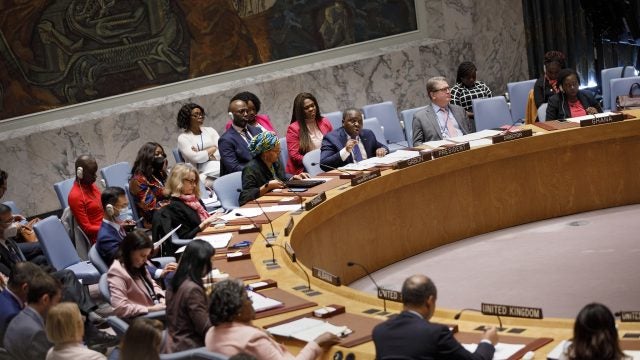
Title: The Journal Revisited: Shadow over the Subcontinent
Read Arabinda and Amitav Acharya’s piece here
In the Georgetown Journal’s 2001 winter issue, Arabinda Acharya and Amitav Acharya co-authored a piece reviewing security issues in a nuclear South Asia- particularly analyzing India’s nuclear doctrine and its repercussions on non-proliferation goals. India and its neighbor/rival Pakistan had become openly nuclear in 1998 much to the consternation of the global non-proliferation regime. The authors predicted that dealing with India’s nuclear aspirations would pose a major challenge for the United States.
In addition, they recommended that India sign the Comprehensive Test Ban Treaty (CTBT) to boost its credibility. But ten years later, where do things stand?
The authors argued that by 2001 the US would have “to ensure that both India and Pakistan accept a moratorium on producing and testing nuclear weapons….. Achieving these results will pose a severe test for the Bush administration, which has pledged to “deal more wisely with the world’s largest democracy.” But by 2005, “dealing more wisely” culminated in the negotiation of a full-fledged civilian nuclear cooperation agreement with India which only further antagonized the non-proliferation lobby. Even today, India’s often quoted good track record fails to convince those dedicated to non-proliferation. India remains a nuclear weapons state that is not a signatory to the Non-Proliferation Treaty (NPT) or the CTBT.
This lack of progress on the CTBT definitely counters what the authors envisioned. After the 1998 tests, the Indian government made assurances to the US that it had introduced the CTBT in Parliament to obtain political consensus (a fact noted by the authors). But by September 2000, India committed to maintain a voluntary moratorium on nuclear testing but would get on board the CTBT only after all 43 states that need to ratify it had done so first. Today, this list includes the United States. At the Conference on Disarmament (CD) in Geneva last month, the Obama administration reaffirmed its commitment “to securing ratification of the Comprehensive Nuclear Test-Ban Treaty (CTBT)” and “engaging the United States Senate and the American public on the merits of the Treaty.” But in an election year, getting a two-thirds majority for ratification in the US Senate remains a challenge.
India’s stand on the CTBT was linked into the Indo-US Nuclear Agreement of 2005 as well. Prime Minister Dr Manmohan Singh restated India’s commitment to continue its voluntary moratorium. When the Nuclear Suppliers Group (NSG) reluctantly granted India its waiver in September 2008, many members states articulated their expectations that India would take further non-proliferation and disarmament measures including entry into the CTBT. Others remained unconvinced that New Delhi’s political promises compensated for legal obligations. Perhaps former UN Under-Secretary-General for Communications and Public Information and Indian parliamentarian Shashi Tharoor encapsulates India’s position best: “We just don’t like other people telling us not to test. I think it is pretty clear that if all the other countries agree to sign, India will not alone hold on to its position.” However, certain voices within the Indian security community present the long tradition of non-use as reason enough for India to sign the CTBT and reclaim its lost standing in the promotion of nuclear disarmament. On the other hand, growing evidence of Pakistan expanding its nuclear arsenal and surpassing India’s stockpile has New Delhi worried. Pakistan’s pursuit of increased nuclear capability seems to be aimed at blunting India’s build-up of conventional superiority. This leaves India hesitant to commit to disarmament.
Undoubtedly, Arabinda and Amitav Acharya’s fears ring true to this day. The Indian subcontinent remains a volatile nuclear flashpoint with a Pakistan that is teetering towards complete collapse. With ten years past, the international community has left its non-proliferation goals uncompleted, and the shadow over the subcontinent looms larger and darker than ever.
. . .
Sumitha Narayanan Kutty is an editorial assistant for the online section of the Georgetown Journal and a student in the MA in Security Studies Program at Georgetown University.
Image Credit: Ministry of Petroleum & Natural Gas (GODL-India), GODL-India, via Wikimedia Commons.
This is an archived article. While every effort is made to conserve hyperlinks and information, GJIA’s archived content sources online content between 2011 – 2019 which may no longer be accessible or correct.
Recommended Articles

This article explores the uncertain future of Arctic governance amid shifting global geopolitics. It argues that whether Washington and Moscow opt for confrontation or cooperation, multilateralism in the Arctic…

Twenty-five years ago, the United Nations Security Council adopted Resolution 1325, establishing a framework that underpins the Women, Peace, and Security (WPS) Agenda. The Resolution recognized both the…

When we analyze conflicts in the Middle East, we are not analyzing conflicts with isolated impacts but risks for global energy security. Recent conflicts in the Middle East have highlighted…